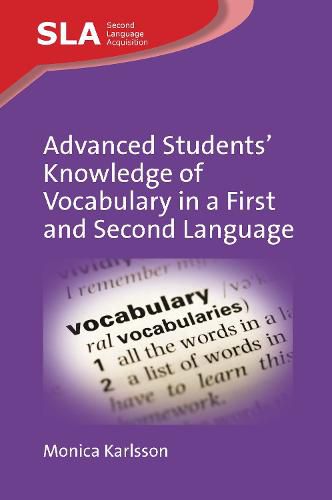Readings Newsletter
Become a Readings Member to make your shopping experience even easier.
Sign in or sign up for free!
You’re not far away from qualifying for FREE standard shipping within Australia
You’ve qualified for FREE standard shipping within Australia
The cart is loading…






This book offers a comprehensive investigation into advanced students’ knowledge of vocabulary in their L1 and L2. As a cross-sectional study, it examines the quantitative aspects of students’ vocabulary knowledge through parallel tests of upper secondary level vocabulary, specialised vocabulary, and advanced vocabulary in both their L1 and L2. It also, primarily in qualitative terms, investigates students’ L1 and L2 knowledge of polysemous words, lexical fields of near synonyms and false friends. Knowledge of derivative forms, idioms, proverbs, idiomatically used prepositions and multi-word verbs offer insights into both the breadth and depth of students’ L1 and L2 vocabulary knowledge. Finally, it considers the extent to which students’ results can be attributed to differences between inferencing skills in their L1 and L2. In each subfield, the pedagogical implications of the findings are discussed. This book will be of interest to teachers and researchers focusing on the teaching and learning of vocabulary.
$9.00 standard shipping within Australia
FREE standard shipping within Australia for orders over $100.00
Express & International shipping calculated at checkout
This book offers a comprehensive investigation into advanced students’ knowledge of vocabulary in their L1 and L2. As a cross-sectional study, it examines the quantitative aspects of students’ vocabulary knowledge through parallel tests of upper secondary level vocabulary, specialised vocabulary, and advanced vocabulary in both their L1 and L2. It also, primarily in qualitative terms, investigates students’ L1 and L2 knowledge of polysemous words, lexical fields of near synonyms and false friends. Knowledge of derivative forms, idioms, proverbs, idiomatically used prepositions and multi-word verbs offer insights into both the breadth and depth of students’ L1 and L2 vocabulary knowledge. Finally, it considers the extent to which students’ results can be attributed to differences between inferencing skills in their L1 and L2. In each subfield, the pedagogical implications of the findings are discussed. This book will be of interest to teachers and researchers focusing on the teaching and learning of vocabulary.